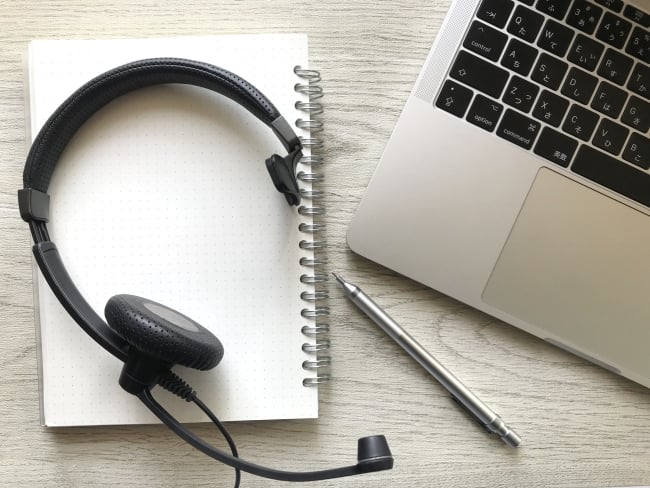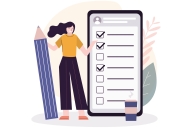You have /5 articles left.
Sign up for a free account or log in.

akebi/iStock/Getty Images
Before COVID, I regularly designed field trips as a way to introduce students to primary research, although those outings required a significant investment of time and effort by my students and me. Teaching during the pandemic, however, allowed me to experience new instructional possibilities, notably the ease of conversing with local and global experts online. Sensing the potential of virtual interviews, I designed a teaching experiment with the hope that such an exercise would improve interview research skills among students—skills I believe are undertaught at the undergraduate level—in a less resource-intensive manner than field trips.
I came up with a starter exercise that could be built upon in later courses. I had students participate in a series of structured 30-minute online group interviews with practitioners and integrate that material in an assignment. These were not one-on-one interviews, online focus groups or one-off guest lecture visits. Rather, students led pointed conversations with handpicked experts on a particular theme and learned through an interactive format rather than just a one-way flow of information through a guest lecture.
Conceiving well-designed questions that yield revealing answers is a key skill that students can and should hone in college. By replacing two classroom weeks with themed group online interviews, students encountered new ideas, took steps toward resolving a research problem and cultivated a question-oriented mind-set. The exercise, which could be adopted in courses in all disciplines, demonstrates how blended and experiential learning naturally fit together. The exercise also contributes to the scholarship of teaching and learning by emphasizing the value of what I term “starter exercises.”
Starter exercises. Often, as instructors, we expect students to conduct their own independent primary research immediately. But without proper training, that is unrealistic and can lead to an unsatisfactory experience for unprepared students. A better way to introduce interviewing is with a lower-pressure activity that acts as a building block leading to more advanced interview work. Students focus on the fundamentals—question design and analysis of interview findings—in a condensed format. Knowledge disseminated through lectures and basic practice in the classroom, followed by group interviews, is sufficient for a first experience and provides scaffolding for later work. Another rationale for starter exercises is that productive early research experiences have been found to significantly affect performance in capstone projects and theses.
Experiential learning. The project also served to boost experiential learning as students carried out tasks in the following sequence:
- Studied an issue.
- Engaged with that issue differently—via a set of interviews with practitioners—and have a new experience.
- Practiced a research skill: interviewing.
- Reflected on what they heard and experienced.
- Did something with the new experience: applied information collected in the interviews to an assignment by reassessing their arguments and conducting additional research.
Blended, not hybrid, learning. I have found that trying to foster learning among students who are split between the classroom and online spaces at the same time can be limiting. Blended learning is the better approach, mixing together in-person and virtual learning at different times. In the project I conceived, 85 percent of the semester was spent in the classroom—with discussion, active learning components and lectures—and 15 percent took place virtually.
How the Assignment Worked
I framed the assignment around food systems because students are more interested than ever before in how the food on their plate is related to globalization, technological change and local traditions. Also, energy and transport dominate public discussions on the climate crisis, and more attention is needed on the food-climate connection.
My students grappled with the following question: Is technology a force for good in terms of the food system? In the weeks preceding the interviews, I lectured on food and the global economy and shared a set of key readings. I also described how to conduct interviews, ran applied interview exercises and shared a list of recommended resources. I organized all the interviews so as to let the students focus their energy on preparation beforehand. To balance the largely pro–food technology practitioners, I instituted a requirement that students engage with critical academic literature on food systems. And I required them to cite both the interviews and those critical readings in their final project.
The class interviewed 13 local and international experts, including company founders at the forefront of new proteins (cell-grown, insects and plant-based) and new methods (indoor vertical farming and indoor fish farms). They spoke with officials from the only two companies in the world trying to bring cell-grown human milk to market. We also interviewed indoor farming leaders in both Hong Kong and the Middle East.
I secured most of the interviews through cold calls. My success here impressed students and demonstrated to them that people will be generous with their time if you clearly explain the aim of the exercise and how the interviewee’s ideas stand out to you. For example, I read an article in the Los Angeles Times, “Can strawberry-picking robots save California’s growers?” and then showed students how to call an organization, send an invitation and book an online interview—in this case with the founder. Many interviewees noted that they had never been approached in this way by an academic before. The 30-minute interview length increased the odds of the interviewees accepting my invitation and encouraged focused conversations.
The students led interviews, analyzed interviewee responses and incorporated that material as evidence in their assignment. Multiple group interviews are more valuable than a single one-on-one interview as a first research experience, generating more comparative data and learning experiences for students.
Some level of structure helped students produce better work. I assigned five groups of students to each interview to pose questions in a set order. Groups decided beforehand and rotated the question lead. Without that structure, a small number of students would ask the bulk of questions. If time remained after the first five questions, the floor was opened to all students. The interviews were shared sessions, and students could join as many as they liked. Each group had to have a minimum of one student in attendance at each interview.
I also found that, in choosing not to prescreen questions, students learned through a process of experimentation. A standardized interview, where each interviewee is asked identical questions, fails to test the ability of students to form relevant and interesting questions specific to guests. At its best, students were commended by the specialists they interviewed. For example, one student listened to a range of podcasts to form a question, impressing the interviewee. In more disappointing cases, students reflected and improved.
After the interviews, the students:
- Were assigned turns to write short reflective notes for their group on how each interview might factor into their group paper.
- Compared information across interviews through close analysis of interview transcripts and videos (they could draw on any information generated through questions to interviewees, not just their own questions).
- Carried out additional research.
- Chose how to organize their arguments and findings in two written forms.
The assessment balances the efforts of the team and the individual student. Groups of students had to work together and received one grade for their framework of analysis and central argument. Then each individual chapter, which could be thematic or focused on one or more case studies, had to be linked back to themes raised in the group chapter. I also told the students that both the group and individual papers must contain information from at least three or four of the interviews.
The Students’ Evaluation
When students were surveyed on their overall evaluation of the exercise, the feedback was overwhelmingly positive. A high proportion agreed with the statement “Over all, I consider the learning experience provided by interviewing food experts this semester as valuable.”
The top-cited learning gain from the interview assignment was applying concepts from the course. The second-ranked learning gain was “discovered new interests to pursue after class.” A focus group discussion suggested that readings and secondary research alone would not have spurred the curiosity to continue exploring this topic at the course’s conclusion.
The results suggest that these short conversations enable students to see an issue differently. Taken together, the students left the interviews thinking more critically about the future of food and armed with new sources of information. Written comments reinforced this assessment, with the largest number of comments referring to learning new information.
The group dynamic changed the nature of an interview. Unlike one-on-one interviews, students:
- Observed how their peers ask questions.
- Took information away from responses to other questions rather than being limited to only one or two of their own interviews.
- Strengthened their listening skills as part of the information collection process.
Considering the whole experience, students were asked, “Do you feel that knowledge gained through the interviews was worth it to give up class time?” Over 80 percent of students answered in the affirmative in both courses, expressing clear-cut support for substituting online interviews for two classroom weeks.
Adopting this teaching method entailed only a moderate addition to my workload. It took time to set up interviews, but with a standard letter that could be customized for each request, the time required was not onerous. There was no lecture preparation for two weeks, and interviews were predominantly student-driven.
A final note: by requiring reference to both the interviews and certain types of readings, the assignment appears to have lessened students’ use of ChatGPT. Unlike in all my other courses, Turnitin did not identify one suspicious paper under its artificial intelligence estimate tool.
I recommend that other instructors consider similar starter exercises. Replacing two conventional classes with a series of group interviews is portable to all disciplines and feasible in classes of up to 50 students. Any theme could work so long as the research question is thought-provoking and interviewees are aligned closely with the theme.
Students left the course with new information, better equipped to ask questions and interpret answers, and ready for independent primary research. And those research skills—forming questions, analyzing responses and searching for additional information—are transferable to their professional and civic lives. As one example, the confidence gained in such interviews can equip students for careers in which online meetings and interviews will be routine. Indeed, posing questions is a life skill that can and should be practiced and sharpened—and instructors should, as much as possible, design teaching experiments to advance that mission.








